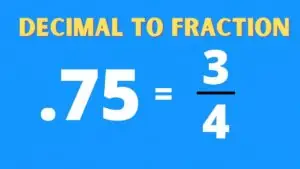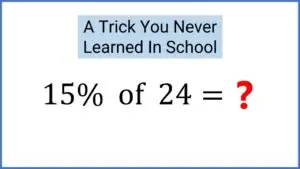Mathematics can sometimes feel like a maze of complex concepts, especially when it comes to understanding the different ways numbers can be represented. One such concept that often puzzles students and parents alike is expanded form in math. In this article, we will demystify the notion of expanded form and explore its significance in understanding the fundamental concept of place value. By the end of this article, you’ll have a clear understanding of what expanded form is and how it can enhance your mathematical prowess.

✅ AI Essay Writer ✅ AI Detector ✅ Plagchecker ✅ Paraphraser
✅ Summarizer ✅ Citation Generator
Understanding Expanded Form: A Closer Look
Expanded form is a term that frequently arises when exploring the realm of place value in mathematics. It involves breaking down a number into its individual digits and representing each digit according to its value in the given number. This form provides a comprehensive understanding of how each digit contributes to the overall value of the number. For example, consider the number 542. In expanded form, we would represent it as follows:
- The value of the 5 in the hundreds column is 500 (5 x 100).
- The value of the 4 in the tens column is 40 (4 x 10).
- The value of the 2 in the ones column is 2 (2 x 1).
As you can see, expanded form allows us to visualize the value of each digit and how it contributes to the overall number. This form not only enhances our comprehension of numbers but also facilitates various mathematical operations.
Expanded Form and Standard Form: A Comparative Analysis
To gain a more holistic understanding, let’s explore the relationship between expanded form and standard form. Standard form refers to the conventional way of representing numbers, such as 356, 34, or 4.67. In standard form, numbers are not broken down into individual digits; instead, they are expressed as a whole. On the other hand, expanded form delves deeper into the underlying structure of a number, revealing the value of each digit. By transitioning between expanded form and standard form, we develop a deeper understanding of how numbers are constructed and the significance of each digit.
Examples of Writing Numbers in Expanded Form
Let’s delve into some examples to solidify our understanding of expanded form.
Example 1:
Consider the number 9831. In expanded form, we break it down as follows:
- The value of the 9 in the thousands column is 9000 (9 x 1000).
- The value of the 8 in the hundreds column is 800 (8 x 100).
- The value of the 3 in the tens column is 30 (3 x 10).
- The value of the 1 in the ones column is 1 (1 x 1).
By representing the number in expanded form, we gain valuable insights into its composition and the magnitude of each digit.
Example 2:
Now, let’s explore a number that includes a zero. Consider the number 7204. The expanded form representation of this number is as follows:
- The value of the 7 in the thousands column is 7000 (7 x 1000).
- The value of the 2 in the hundreds column is 200 (2 x 100).
- The value of the 4 in the ones column is 4 (4 x 1).
Note that we don’t assign a value to the zero in the tens column because it holds no numerical value. However, it is crucial in standard form as a placeholder, ensuring the integrity of the number.
Expanded Form with Decimals: Unveiling the Power of Precision
Expanded form is not limited to whole numbers; it can also be used to represent decimal numbers. Just like with whole numbers, expanded form provides insights into the value of each digit in a decimal number. Let’s consider the number 3.586 and represent it in expanded form:
- The value of the 3 in the ones column is 3 (3 x 1).
- The value of the 5 in the tenths column is 0.5 (5 x 0.1).
- The value of the 6 in the hundredths column is 0.06 (6 x 0.01).
- The value of the 8 in the thousandths column is 0.008 (8 x 0.001).
Expanded form enables us to dissect decimal numbers and comprehend the significance of each place value, reinforcing our understanding of their magnitude and precision.
Expanded Form vs. Expanded Notation: Differentiating the Terms
While exploring expanded form, you may come across the term “expanded notation.” While similar, these terms have slight differences. Expanded form represents a number as the sum of the value of each digit, as demonstrated in the previous examples. In contrast, expanded notation represents a number as the sum of each digit multiplied by its respective place value. For instance, in expanded notation, the number 542 would be expressed as (5 x 100) + (4 x 10) + (2 x 1). Expanded notation reveals the mathematical calculations underlying the process of reaching expanded form.
The Power of Expanded Form: Enhancing Mathematical Proficiency
Understanding expanded form has numerous benefits, particularly in relation to place value and working with large numbers. By breaking down numbers into their respective digits and values, expanded form fosters a deep comprehension of the place value system. This knowledge can be applied to various mathematical operations, such as addition, subtraction, and multiplication. For instance, when mentally calculating a sum like 48 + 33, the ability to break down each number into its tens and ones components, similar to converting them into expanded form, simplifies the calculation process. By adding up the ones (11), adding up the tens (70), and combining the two totals, we arrive at the answer, 81.
Conclusion
Expanded form in math provides a powerful tool for comprehending the value and structure of numbers. By representing numbers in expanded form, we gain insights into the contributions of each digit, enhancing our understanding of place value. Whether working with whole numbers or decimals, expanded form unveils the intricate nature of numerical representation. So, the next time you encounter a question or homework assignment involving expanded form, remember its significance and the knowledge it imparts. Embrace expanded form as a key to unlocking mathematical proficiency and unraveling the mysteries of numbers.
FAQ
What are the place value columns in expanded form?
The place value columns in expanded form are determined by the base 10 system. They include the ones column, tens column, hundreds column, thousands column, and so on. Each column represents a power of 10, with the rightmost column being the ones column and each subsequent column increasing in value by a factor of 10.
How is expanded form used in addition and subtraction?
Expanded form can be helpful in addition and subtraction by allowing us to break down numbers into their place values and perform operations on each corresponding place value column. When adding or subtracting numbers, we can manipulate the expanded form of each number to carry out the operations column by column, ensuring accuracy and understanding of the process.
Can you show an example of expanded form with decimals?
Certainly! Let’s consider the number 3.586. In expanded form, it would be represented as (3 x 1) + (5 x 0.1) + (8 x 0.01) + (6 x 0.001).
What is the relationship between expanded form and place value?
Expanded form and place value are closely related. Place value refers to the value of a digit based on its position within a number, while expanded form breaks down a number into the sum of its digit values according to their respective place values. Expanded form helps us understand the significance of each digit in relation to the place value system.
Are there any rules or patterns to follow when writing numbers in expanded form?
Yes, there are some rules and patterns to follow when writing numbers in expanded form. Each digit is multiplied by the corresponding power of 10 based on its place value column. The value of each digit is obtained by multiplying it by the power of 10 associated with its place value column. For example, in the number 542, we have (5 x 100) + (4 x 10) + (2 x 1) in expanded form.
How does expanded notation differ from expanded form?
Expanded notation is similar to expanded form but involves expressing a number as the sum of each digit multiplied by its respective place value. In expanded notation, each digit is explicitly multiplied by its corresponding power of 10. Expanded form, on the other hand, represents a number as the sum of the value of each digit. For example, in expanded notation, the number 542 would be expressed as (5 x 100) + (4 x 10) + (2 x 1), whereas in expanded form, it would simply be written as 500 + 40 + 2.
Follow us on Reddit for more insights and updates.





Comments (0)
Welcome to A*Help comments!
We’re all about debate and discussion at A*Help.
We value the diverse opinions of users, so you may find points of view that you don’t agree with. And that’s cool. However, there are certain things we’re not OK with: attempts to manipulate our data in any way, for example, or the posting of discriminative, offensive, hateful, or disparaging material.